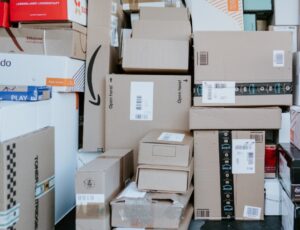
As the cost of living crisis continues, thoughts are now turning to what 2023 will have in store and how ecommerce will respond to the challenges ahead. Brightpearl spoke to a range of industry experts to get their predictions on the ecommerce trends that every retailer should know about this New Year and over the next 12 months.
1. Loyalty will be key
According to many retail experts, the top priority for retail this year should be customer retention. We know that brands which prioritise customer retention are officially more successful. In fact, increasing retention rates by just 5% can increase your profits by 95%, according to research.
That makes sense when you consider that the chance of selling to an existing customer is 60-70%, but the chance of selling to a new prospect is typically just 5-20%.
“The amount and style of shopping options have multiplied tremendously if you include social shopping, video shopping, in-game shopping and of course, Metaverse/Web 3.0,” says Christine Russo, a prolific content creator and writer for Leading Retail Brands and Deloitte. “How do you gain and keep customers when their options seem endless? The answer is loyalty. It’s as old fashioned as it comes – but treating people nicely keeps them coming back.”
The likelihood of retaining a customer directly links to the experience they have after hitting the ‘buy’ button
If their experience is good – including prompt dispatch, good comms, and fast delivery – retention is a safe bet. If their experience is bad – including errors, delays or lack of comms – retention is far less likely; 77% of 1-star reviews on Trustpilot are a direct result of a poor post-purchase experience. Andrew Busby, a top 20 global retail influencer and IBM Futurist, says retailers need to prioritize Customer Lifetime Value (LTV) as the most important metric to measure over the coming year.
“Consumers will become increasingly less tolerant, meaning that brand loyalty will become virtually extinct and customer lifetime value will assume even greater significance,” he says. “Price, value and service wrapped in great customer experience will be what consumers will continue to look for – without it, they will quickly move on.”
In 2023 we expect more brands to invest in rewarding customers for loyalty as a way to show appreciation for their ongoing custom. There are a number of ways to do this, including loyalty and referral programs, free gifts and personalized discounts. A retail operating system can help you easily segment your customers based on several factors. For example, biggest spenders, seasonal shoppers and customers that have been coming back year after year.
Automatically flag orders from these customers so that you can add a free gift or another form of ‘thank you’. If you’re worried about the impacts of ‘discounts’ on your bottom line this year, a simple, prompt thank you email, or even a personalized note, can go a long way.
2. Cost and inventory pressures must be addressed
From rent to sales and marketing, freight, stock, fuel and wages; 89% of retailers have experienced an increase in costs over the past six months. These cost increases have eaten heavily into retailers’ margins, adding strain to the already-slim, high-growth and low-profit models many operate under.
Our experts argue these pressures will only intensify over the next 12 months and must be addressed. Russo continues: “I expect brands and retailers to continue to face cost and inventory pressures as a result of inflation and ongoing supply chain issues. Consumer behaviour will remain uncertain as a result of the economic backdrop, and this will impact both e-commerce and physical stores alike.”
According to a recent survey by Inventory Planner, almost half (45%) of retailers have surplus goods they’re desperate to offload – accounting for almost 24% of their entire stock holding. Two-thirds of brands also admit (59%) there’ll be a ‘dangerous’ impact on cash flow if they can’t move that stock onward in the New Year.
Mark Hook, a spokesperson for Brightpearl, expands on the problem
“Excess stock is a major issue because products start to decrease in value over time. Among other things, goods can start to deteriorate and perish – go out of fashion, become redundant and more. With tough times ahead in 2023, cutting stock will be seen as a crucial strategic move that all brands will need to take to ensure their cash flow remains healthy.”
“Optimizing inventory, moving on dead [excess] stock, and releasing cash to offset cost pressures will be top of mind for retailers. Merchants who come out ahead in 2023 will be the ones who are most responsive to rapidly shifting customer demand,” adds Jill Liliedahl, a spokesperson for Inventory Planner.
“It’s tempting to ‘go big’ by over-ordering inventory to buffer against supply chain problems. The danger in that approach is that critical cash needed to stay in business will be tied up in unneeded stock. Merchants who have a finger on the pulse of demand trends for their products and react accordingly can make smart investments in inventory that will maximize their cash flow and profits.”

3. Strategic sustainability will be a top priority
Sustainability has been a hot topic in retail for a long time. However, in 2023 our experts believe consumers – especially younger shoppers – will be more informed, educated and aware than ever before and opt to spend more of their money with truly sustainable brands.
“Ecommerce brands should expect that their customers will become ever more aware of environmental issues and seek out those for whom they feel their values are aligned,” explains Busby. “This will mean even greater transparency with regards to things such as manufacture, sourcing, provenance, workforce, materials and so forth.”
Modern customers are becoming increasingly aware of the sustainability aspect of the product they are consuming. Sustainability will play a crucial role in the market, and with more consumers embracing green commerce, brands must follow, making it a strategic priority in 2023.
4. VR’s time to shine
The metaverse may have become a buzzword, but virtual retail environments are on the rise. Modern consumers prefer shopping online, but still want entertainment and inspiration. VR can help make this happen, and offering virtual experiences is now more affordable for brands, especially compared to the costs of opening and running a physical store.
Cate Trotter, Head of Trends at Insider Trends, predicts VR to kick off in 2023. “Retailers will go beyond just rebuilding a digital copy of the store for customers to explore virtually, either through VR or on a screen. Instead, the focus will be on new ways for brands to express what they’re doing outside the restrictions of what we think of as the ‘store’.
“We don’t yet know what these digital experiences might look like. They could be anything from seeing your favourite fashion designer at work in their studio to going inside the latest smartphone. But they will act as the next phase of e-commerce by allowing customers to buy products within the experience.”
5. Livestream shopping to grow in prominence
Online shoppers have already grown accustomed to Livestream shopping, with companies like Wishtrend and Nike building up huge businesses based on this business model. According to a recent study by Brightpearl, 1 in 5 US shoppers have watched or participated in a Livestream shopping event in the past 12 months and 86% would like to see more retailers offering livestream shopping.
Our experts predict that livestream shopping will continue to grow in prominence in 2023, with livestreaming platforms such as TalkShopLive and Brandlive reporting skyrocketing sales. The biggest e-commerce players of all – Amazon and Facebook – have also invested heavily to roll out live selling features.
It’s a trend that will shape the future of selling online. “There’s no doubt that livestream commerce is gaining traction – whether it’s broadcasting to a wide audience or connecting a single customer to a sales assistant for personal support,” says Cate Trotter from Insider Trends.
“Increasingly, we’re seeing brands putting livestream capabilities into their stores – as with Beautycounter in the US. Not only does this add a sense of theatre to the physical retail experience, but it’s also a way to make better use of staff in quiet periods.
“We see livestream commerce sparking a wider shift in what retailers look for when recruiting store staff. Presentation skills and the ability to engage comfortably in front of the camera are going to be highly sought-after skills in the future.”












